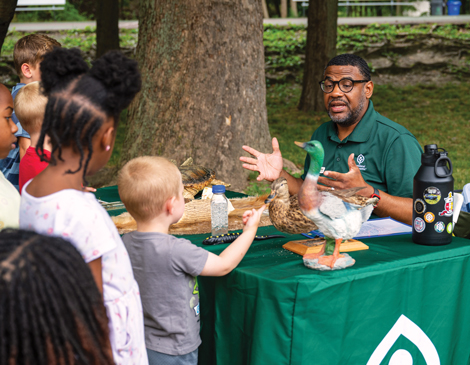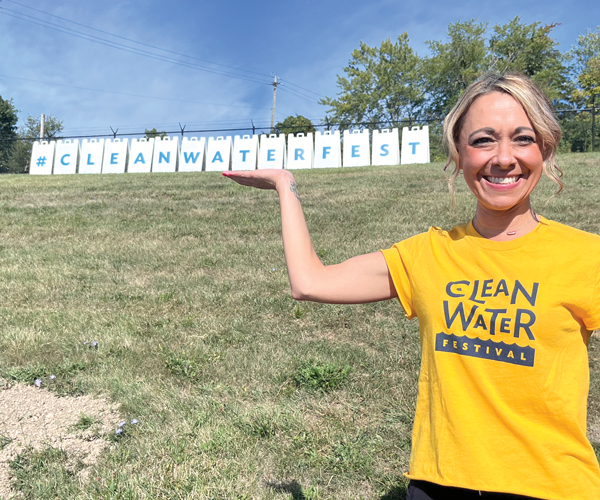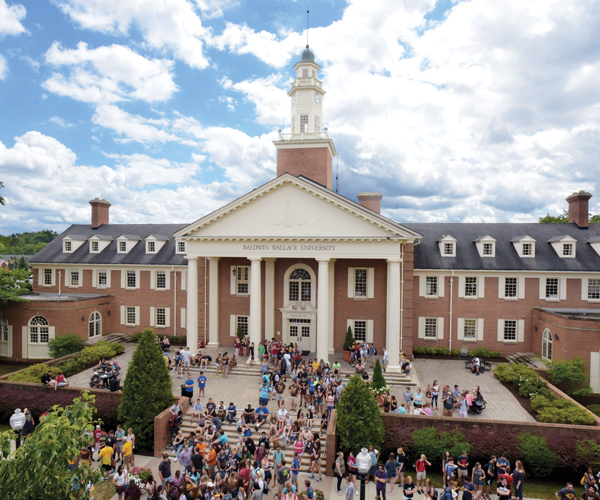Old rusty fencing, dilapidated buildings and the remnants of a softball diamond are all gone. The Great Lawn is about to rise from what was once a big, neglected ballfield in South Gordon Park, located south of I-90, on Cleveland’s East Side. The large, open green space will be surrounded by an accessible walking trail and used for a variety of recreational and social purposes.
Along the looped path will be picnic shelters, benches, tables and grilling areas. There, families and friends from the surrounding St. Clair-Superior neighborhood can meet and enjoy the outdoors.
The creation of walking paths was the number one request by community residents for the re-imagined city park, whose management was taken over by Cleveland Metroparks in 2023. Other planned amenities in this southern portion of Gordon Park include a nature play area, comfort stations and a community pavilion to be built over the next several years.
“There is a difference between a city park, which tends to be more recreationally focused, and a Cleveland
Metropark, which focuses more on nature,” says Mary Rouse, director of outdoor experiences for Cleveland Metroparks. “We wanted South Gordon Park to be more typical of a Cleveland Metropark reservation and it was very important to work with the community.”
Cleveland Metroparks considers intentional community education, conservation outreach and neighborhood engagement to be vital in transforming South Gordon Park (and North Gordon Park on the lakefront, connected by a foot bridge over I-90) into viable, urban parkland used by all.
“We want to reach audiences within the park district we may not normally see or serve,” says Rouse. “We want people to make a connection not just to the parks, but to nature and conservation and also inspire them to action.”
Once accomplished, that bond can help “ensure the health of our parks in perpetuity,” and provide opportunities for park visitors to enjoy social, physical and mental health benefits, according to Rouse. Parkland can also aid in flood prevention, capture stormwater, create cleaner air and maintain a habitat for wildlife, she says.
North Gordon Park has also benefited from community involvement through the park district’s Watershed Volunteer Program (WVP). Volunteers helped clear invasive plants and cared for trees, and planted the wetland in the park. Districtwide, WVP attracts about 300 volunteers who donate more than 4,000 hours of their time in a given year, says Jennifer Grieser, Cleveland Metroparks’ director of natural resources.
“We offer a wide range of activities for a wide range of skills and abilities,” says Grieser, adding that volunteers must be 18 or over except for some drop-in programs where children are accompanied by an adult. It’s really a choose-your-own adventure — wetlands, natural resources, conservation. We offer learning modules, restoration activities and monitoring events and monthly activities.”
Watershed Stewardship Certification can be earned by volunteers who complete certain requirements. That accomplishment, as well as being an occasional WVP participant, also has been embraced by some individuals who wish to strengthen their employment resume.




